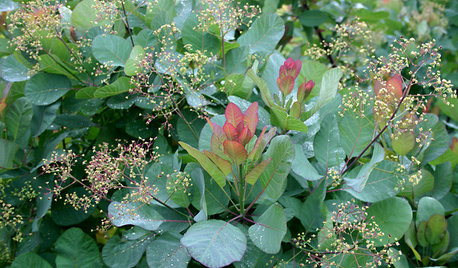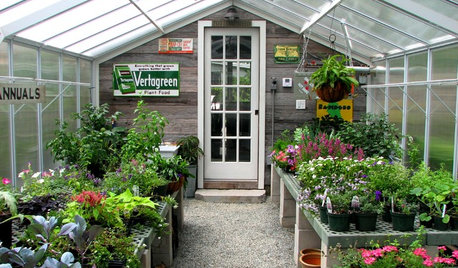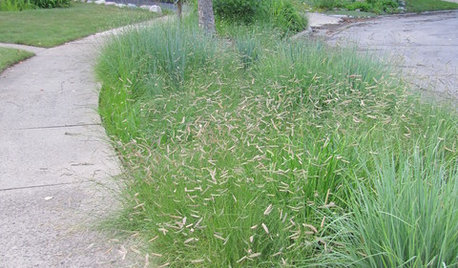question on old garden plants
altorama Ray
20 years ago
Related Stories

GARDENING GUIDESNo-Regret Plants: 5 Questions Smart Shoppers Ask
Quit wasting money and time at the garden center. This checklist will ensure that the plants you're eyeing will stick around in your yard
Full Story
LANDSCAPE DESIGNGreat Design Plant: Old Fashioned Smoke Bush
Balance garden color with this shrub's cool blue-green foliage, luminous when backlit and sporting yellow-green flowers in spring
Full Story
NATIVE PLANTSGreat Design Plant: Wild Bergamot, Friend of Foragers
Nourish butterflies and other winged creatures with the tubular flowers of Monarda fistulosa, a pretty pink native
Full Story
EXTERIORSCurb Appeal Feeling a Little Off? Some Questions to Consider
Color, scale, proportion, trim ... 14 things to think about if your exterior is bugging you
Full Story
FEEL-GOOD HOMEThe Question That Can Make You Love Your Home More
Change your relationship with your house for the better by focusing on the answer to something designers often ask
Full Story
ORGANIZINGPre-Storage Checklist: 10 Questions to Ask Yourself Before You Store
Wait, stop. Do you really need to keep that item you’re about to put into storage?
Full Story
REMODELING GUIDESConsidering a Fixer-Upper? 15 Questions to Ask First
Learn about the hidden costs and treasures of older homes to avoid budget surprises and accidentally tossing valuable features
Full Story
LIGHTING5 Questions to Ask for the Best Room Lighting
Get your overhead, task and accent lighting right for decorative beauty, less eyestrain and a focus exactly where you want
Full Story
OUTBUILDINGSRoom of the Day: An Old Shed Becomes a Spa and Greenhouse
A garden-loving couple create the perfect place to have a soak and putter with their plants year-round
Full Story
GARDENING GUIDESGreat Design Plant: Bouteloua Gracilis
Resilient blue grama grass thrives in sunny meadows and parking strips in the western U.S.
Full Story





ZephirineD
mjsee
Related Professionals
Surprise Landscape Architects & Landscape Designers · Jennings Landscape Architects & Landscape Designers · Concord Landscape Contractors · Danvers Landscape Contractors · Florham Park Landscape Contractors · Golden Gate Landscape Contractors · Lancaster Landscape Contractors · North Hills Landscape Contractors · Bolingbrook Siding & Exteriors · Cheektowaga Siding & Exteriors · Oakville Siding & Exteriors · Fort Lee General Contractors · La Grange Park General Contractors · Muskogee General Contractors · Pasadena General Contractorsspectre
phdnc
mjsee
ginger_nh
kategardens
ginny12
ginger_nh
FranVAz7
PucPuggyII
ZephirineD
ginny12
ginny12
FranVAz7
ZephirineD
inkognito
inkognito
mjsee